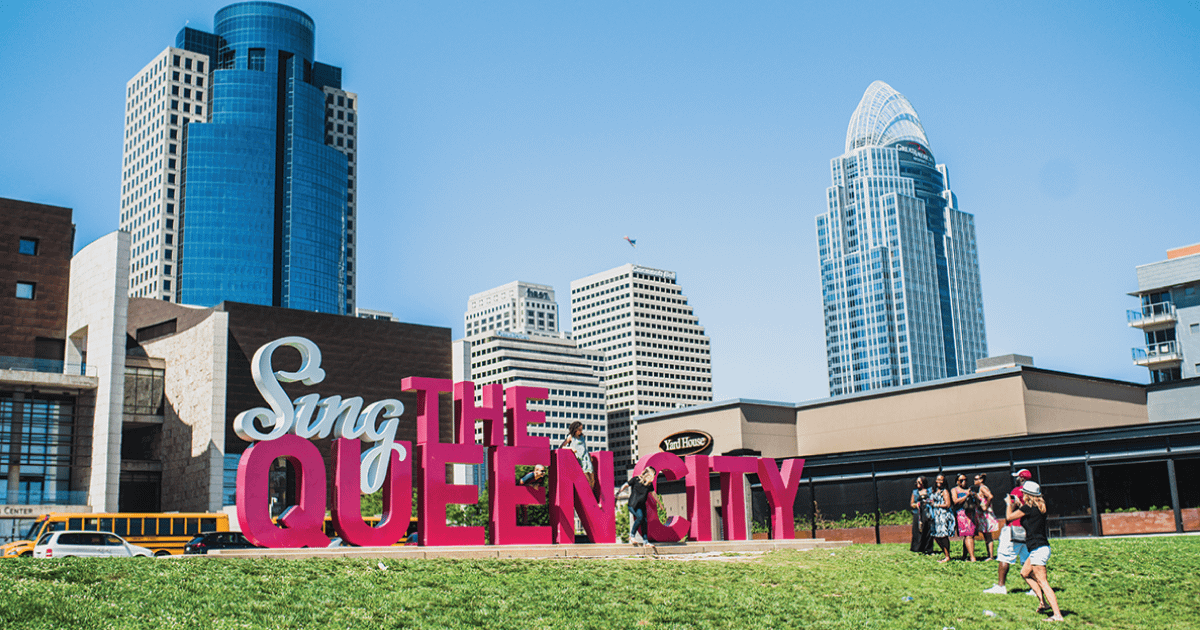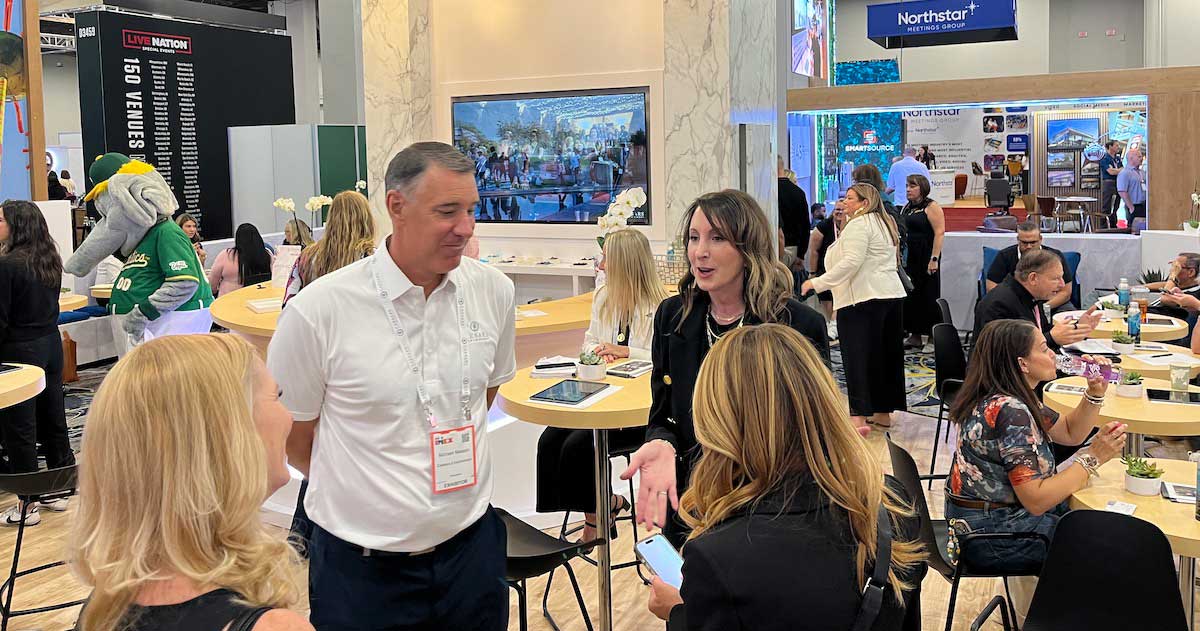Cincinnati is looking up. After a few years of lethargy, downtown revitalization is paying off, says planner Greg Leming (MPI Ohio Chapter) of Accent On Cincinnati Inc.
“Cincinnati has always had rich culture and arts and great museums,” he says. “There was kind of a lull in the action; with the revitalization of our downtown area with the development of the Over-the-Rhine area and at the river banks, everything has flourished in the last few years.”
In short, Cincinnati is back and people are voting with their feet. In 2018, more than 26.6 million people visited the city. And major groups such as the Health Professions Network, American Choral Directors Association and National Association of Black Journalists have booked Cincinnati.
Various publications have rated it among the top five best U.S. cities to visit and top 10 rising meeting destinations.
These aren’t mere chamber-of-commerce-like platitudes—there are hard reasons why Cincinnati shouldn’t be dismissed as part of another fly-over state. It’s headquarters to nine Fortune 500 and 15 Fortune 1000 companies. And 400 of the Fortune 500 have a presence in the city. When it comes to the concentration of corporate head offices, Cincinnati is among the top 10 markets in the U.S., ahead of New York, Boston, Chicago and Los Angeles.
It has a major presence among financial services, chemical, tech, healthcare, automotive manufacturing, food and beverage, consumer goods, media and retail companies.
Leming says that while large corporations such as Procter & Gamble, Kroger, GE and Macy’s are based in Cincinnati, the city retains a small-town charm and feel.
That small-townness means there’s a certain efficiency when it comes to pulling together the talent and services to create a successful program. This is where the city’s strong arts community also comes into play. Cincinnati has a wide-range of spaces and offsite venues to employ either as meeting sites or for social components, and there is a large talent pool of professional entertainers and technical and special effects people.
“Cincinnati is one of only 13 U.S. cities with professional companies in all five arts: ballet, opera, fine art museums, symphony and theater. With that foundation, our arts and culture scene has experienced a tremendous revitalization in recent years,” says Julie Calvert, president and CEO of the Cincinnati USA CVB. “In late 2018, we celebrated the reopening of the iconic Cincinnati Museum Center at Union Terminal following a US$224 million renovation. In 2017, the Cincinnati arts community invested more than $160 million to upgrade and expand its theater infrastructure to create three new theater experiences in the Over-the-Rhine neighborhood.
“Venues like Music Hall and Union Terminal, both of which have undergone or are currently completing multimillion-dollar renovations, transport attendees into a world of exquisite architecture, world-class cultural offerings and truly awe-inspiring atmospheres. Cincinnati has been called one of the top arts cities in the nation, and is home to the first and largest community campaign for the arts in the U.S.”
The 1878 Music Hall has seven spaces available to groups, including a 2,500-seat theater, a foyer and a vaulted-ceiling grand ballroom. Its newer sister property the Aronoff Center has 150-, 437- and 2,700-seat theaters, plus a 3,500-square-foot art gallery and three other rooms on site for group hire.
For those who may have a less high-brow audience, Cincinnati is also a sports city. The Cincinnati Reds were America’s first professional baseball team. Their riverside home stadium, the Great American Ball Park, can host anything from a 100-person plated dinner to a presentation in a 500-seat theater to a 2,500-person reception.
The nearby Paul Brown Stadium, home to the National Football League’s Cincinnati Bengals, can provide breakout rooms for as few as 24 people and host banquets for 800 or receptions for 1,000. It also has three rooms that can hold up to 60 trade show booths. Other options include the 10,000-seat Cintas Center and 17,000-seat U.S. Bank Arena.
For more traditional meeting space there’s the 750,000-square-foot Duke Energy Convention Center and the 65,000-square-foot, LEED-certified Sharonville Convention Center.
“The Cincinnati region is able to accommodate all group sizes, from large citywides to smaller, more intimate events,” Calvert says. “A meeting at the Duke Energy Convention Center downtown means a compact footprint and various entertainment districts within walking distance. A meeting at the Sharonville Convention Center gives attendees the perks of the city paired with the more laid-back, economical qualities of the suburbs.”
Both centers are encircled by hotels in a range of price points, which provide walkable and affordable options for attendees.
The city’s hotel inventory is growing. The 106-room Lytle Park Hotel, which is a member of Marriott’s Autograph Collection, opens this summer in a century-old downtown building. It will have 10,000 square feet of meeting space as well as a 6,000-square-foot rooftop terrace. Later in the year, a 94-room Kinley Humanist Boutique Hotel will open two blocks from the Duke Center. Next year a 362-room dual-branded Canopy by Hilton and Hilton Garden Inn with 15,000 square feet of meeting space will open downtown. It will be joined by a 153-room new boutique Kimpton Hotel that is being built in a historic building three blocks from the Duke Center.
These new players join recently refurbished properties such as The Cincinnatian, a historic 148-room property that just completed a $6 million refresh. The 561-room art deco-styled Hilton Cincinnati Netherland Plaza is currently undergoing a refresh. The property is a AAA Four-Diamond National Historic Landmark with 40,000 square feet of meeting space.
In a hotel re-brand, the Sharonville Ramada Plaza is becoming a Delta Hotel by Marriott. Among Cincinnati’s larger properties are the 456-room Westin, 491-room Hyatt Regency and 872-room Millennium Hotel. Bigger groups can be accommodated, and smaller groups won’t get lost in the crowd.
In terms of unique meeting and offsite venues, the iconic art-deco-style Union Terminal train stations is home to an OMNIMAX Theater as well as the Cincinnati History Library and Archives. The National Underground Railroad Freedom Center has a 300-seat Harriet Tubman Theater, two breakouts for 30 and 80 people and can host receptions for up to 300 and dinners for up to 400. The Jack Cincinnati Casino has a dividable, 19,000-square-foot event center. And BB Riverboats, which operates two paddle-steamers capable of hosting full-ship buyouts for 700, are opening a new dock facility and event center with space for 250 people. There’s also a fire museum, a presidential museum and several brewery options available.
“Cincinnati is an incredibly tight-knit community, and given the opportunity, we can find the connection for planners,” Calvert says. “We have longstanding relationships with groups and organizations across all sectors and continue to make new connections and foster new relationships. That said, we also know where our strengths lie: multicultural and religious organizations, sporting events, technology and innovation, medical groups. We make a concerted effort to continue to have a strong presence and showing in those sectors, but that does not take away from the importance of other business.”







